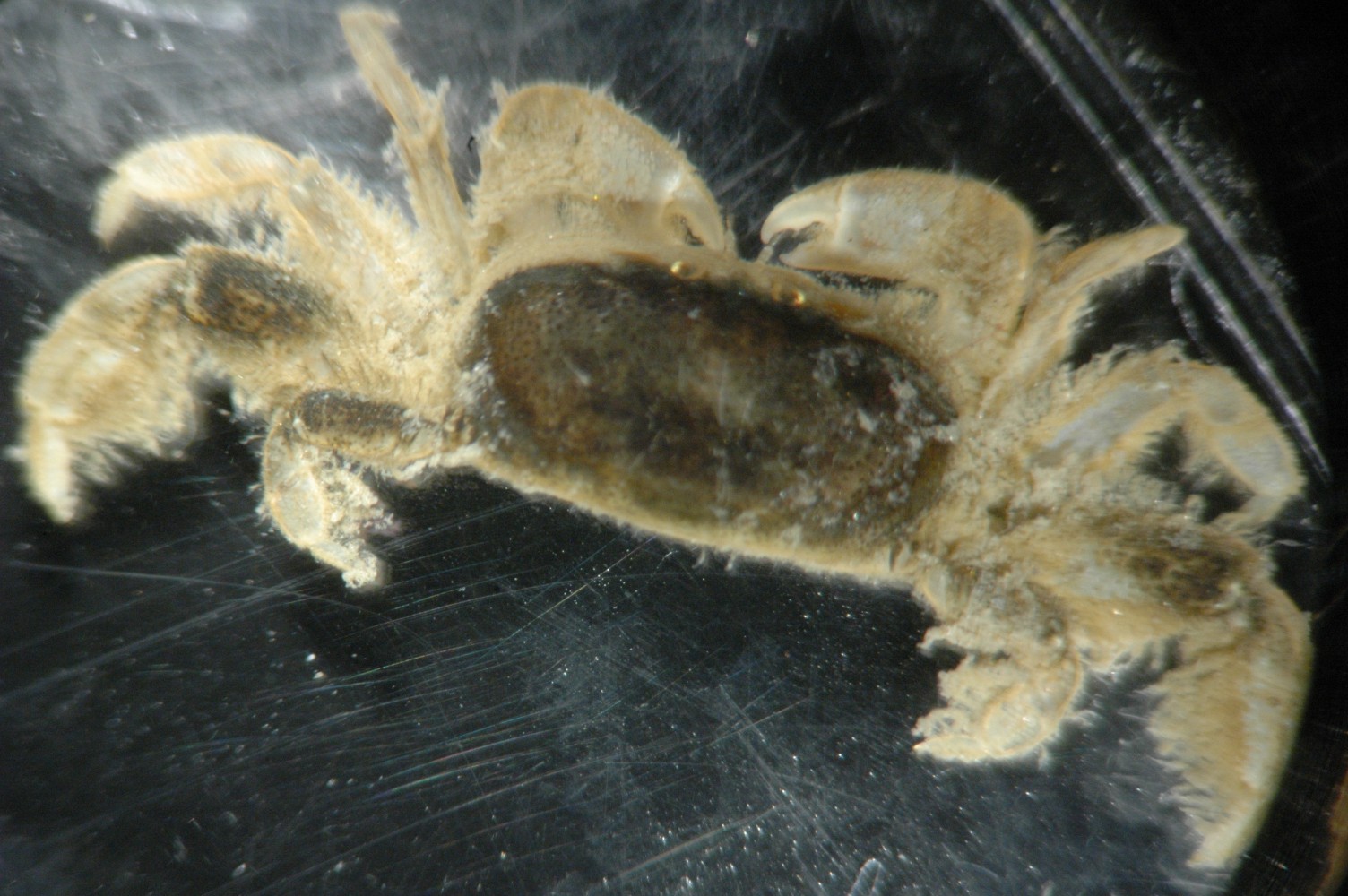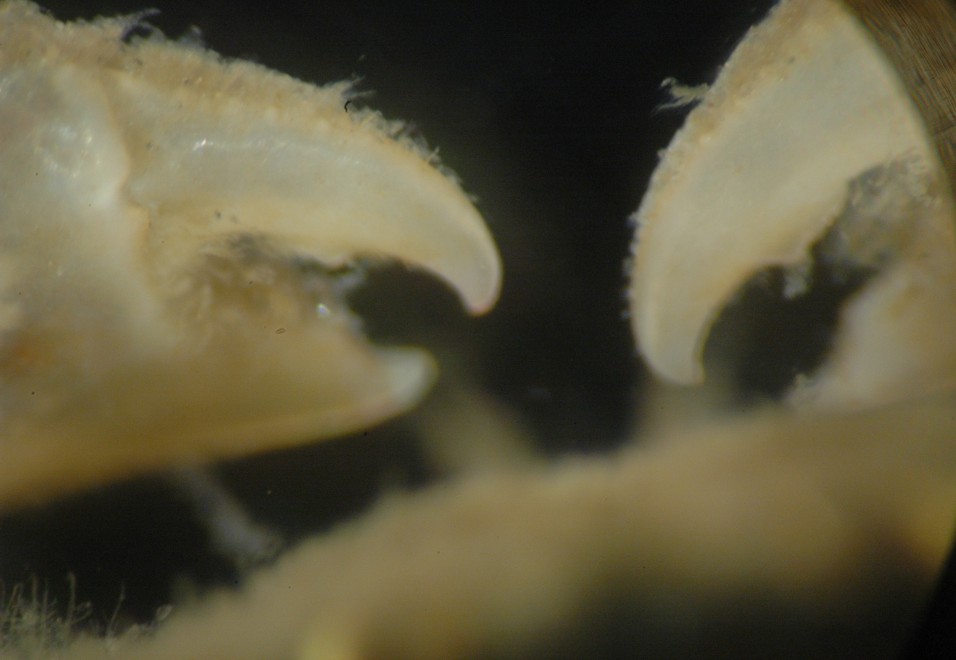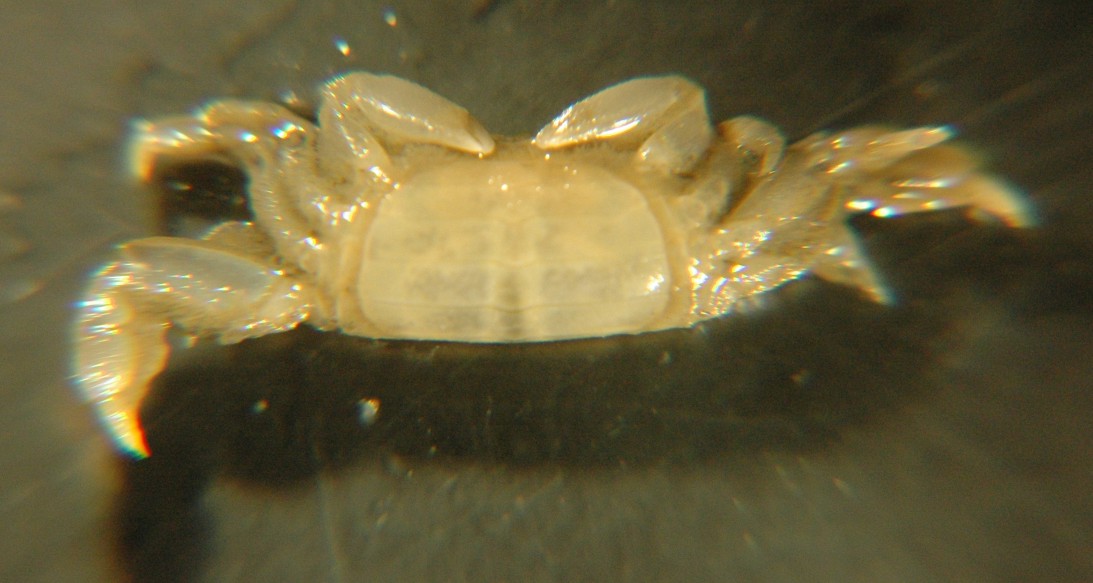Pinnixa eburna Wells, 1928Common name(s): Arenicolid pea crab, Lugworm pea crab |
|
| Synonyms: Pinnixa eburnea |  |
|
Phylum Arthropoda
Subphylum Crustacea
Class Malacostraca
Subclass Eumalacostraca
Superorder Eucarida
Order Decapoda
Suborder Pleocyemata
|
|
| Pinnixa eburna, carapace width 7 mm wide by 3.5 mm long. Found in a burrow of Abarenicola pacifica on the mudflats of Padilla Bay. | |
| (Photo by: Dave Cowles, June 2009) | |
How to Distinguish from Similar Species: P. occidentalis and P. schmittii have carapaces more than 2x as wide as long and with pointed lateral margins, plus have no tooth on the inner margin of the dactyl of their chela. P. tubicola has a propodus longer than the dactyl on legs 3-5 and lives in Terebellid tubeworm tubes. Pinnixa faba and P. littoralis have strongly curved tips to their dactyls and usually live commensally in bivalves.
Geographical Range: Queen Charlotte Islands, BC, Canada to Puget Sound
Depth Range: Intertidal
Habitat: Commensal in lugworm burrows.
Biology/Natural History:
This species is not often collected.
| Return to: | |||
| Main Page | Alphabetic Index | Systematic Index | Glossary |
References:
Dichotomous Keys:Coffin, 1952
Kozloff, 1987, 1996
General References:
Hart,
1982
Ricketts
et al., 1985
Scientific Articles:
Web sites:
General Notes and
Observations: Locations,
abundances, unusual behaviors:

This closeup of the chelipeds
shows the tooth on the inner margin of the dactyl

The legs are flattened, translucent with darker spots or reticulations,
and are fringed with long, abundant plumose setae.
It can also be seen that the dactyls
and the propodus
of the walking legs are of approximately equal length (though the dactyls
are mostly extended downward in this photo and may appear shorter), and
that the dactyls
are nearly straight. Notice that the last leg is much shorter
than
the others.

This view of the underside shows how much lighter the abdomen is, and
also reveals that this individual is a female.
Authors and Editors of Page:
Dave Cowles (2009): Created original page
CSS coding for page developed by Jonathan Cowles (2007)